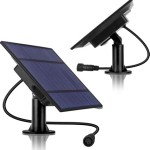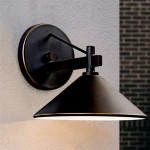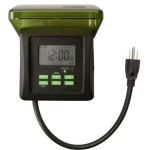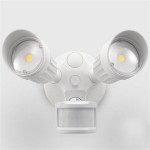How to Plant an Outdoor Planter Box
Outdoor planter boxes offer a versatile and aesthetically pleasing way to incorporate greenery into various spaces, from balconies and patios to decks and front porches. Their portability allows for easy rearrangement and adaptation to changing seasons or design preferences. Furthermore, planter boxes facilitate gardening in areas with limited soil or unsuitable ground conditions. The success of an outdoor planter box relies on careful planning and correct execution, encompassing selecting the right planter, preparing the soil, choosing appropriate plants, and providing ongoing care.
Choosing the Right Planter Box
The selection of a suitable planter box is the foundational step in creating a thriving outdoor display. Several factors warrant consideration, including the material, size, drainage, and overall style.
Material: Planter boxes are available in a range of materials, each with distinct characteristics. Wood, while possessing a natural aesthetic, may require treatment to resist rot and decay. Cedar and redwood are naturally durable options. Plastic offers a lightweight and weather-resistant choice, but may lack the visual appeal of other materials. Metal planters, often made of galvanized steel or aluminum, are durable and can offer a contemporary look, but can heat up significantly in direct sunlight, potentially harming plant roots. Terracotta, while visually appealing and porous, is susceptible to cracking in freezing temperatures. Consider the climate and aesthetic preferences when selecting the material.
Size: The size of the planter box should be proportional to the space it will occupy and the size of the plants it will house. Insufficient space can lead to root-bound plants and stunted growth. A general guideline is to choose a planter box that is at least 12 inches deep and wide, allowing for adequate root development and water retention. For larger plants or combinations of plants, a larger planter box is necessary. Consider the mature size of the plants when making this determination.
Drainage: Proper drainage is crucial for preventing waterlogged soil, which can lead to root rot and other plant diseases. Ensure that the planter box has adequate drainage holes. If the planter box does not have pre-drilled drainage holes, it is essential to add them. The number and size of the drainage holes will depend on the size of the planter box. A general rule is to have several holes at least ½ inch in diameter spaced evenly across the bottom of the planter box. It is also recommended to add a layer of gravel or broken pottery at the bottom of the planter box to further improve drainage.
Style: The style of the planter box should complement the surrounding environment and architectural style of the space. Consider the color, texture, and overall design of the planter box. A rustic wooden planter box may be suitable for a cottage-style garden, while a sleek metal planter box may be more appropriate for a modern patio. The style of the planter box should enhance the overall aesthetic of the space.
Preparing the Soil
The quality of the soil directly impacts the health and vitality of the plants in the planter box. Using the appropriate soil mix and providing proper drainage are essential for successful growth.
Soil Mix: Garden soil is generally not suitable for use in planter boxes due to its tendency to compact and retain excessive moisture. A well-draining potting mix specifically formulated for containers is recommended. A good potting mix typically consists of a blend of peat moss, perlite, and vermiculite. Peat moss provides moisture retention, while perlite and vermiculite improve drainage and aeration. Some potting mixes may also contain slow-release fertilizer, which provides nutrients to the plants over an extended period. Avoid using soil from the garden, as it can contain pests, diseases, and weed seeds.
Drainage Layer: While drainage holes are essential, adding a drainage layer at the bottom of the planter box can further improve drainage and prevent waterlogging. A layer of gravel, broken pottery, or landscape fabric can be used for this purpose. The drainage layer should be approximately 1-2 inches thick. Landscape fabric can be placed on top of the drainage layer to prevent the potting mix from seeping into the gravel or pottery, which can clog the drainage holes over time. It is also important to elevate the planter box slightly off the ground using bricks or planter feet to allow for proper drainage.
Soil Amendment: Incorporating soil amendments can further enhance the quality of the potting mix. Compost is an excellent soil amendment that provides nutrients, improves soil structure, and increases water retention. Well-rotted manure can also be used as a soil amendment, but should be used sparingly as it can be high in salts. Other soil amendments that can be beneficial include bone meal, which provides phosphorus, and blood meal, which provides nitrogen. Follow the instructions on the product label when using soil amendments.
Filling the Planter Box: When filling the planter box with potting mix, avoid compacting the soil too much. Gently fill the planter box to within 1-2 inches of the top. Over-compaction prevents proper aeration and drainage, which can hinder root growth. Lightly tap the sides of the planter box to settle the soil. After planting, water the plants thoroughly to settle the soil further and remove any air pockets.
Selecting and Planting Plants
The selection and arrangement of plants is where creativity comes into play. Considerations include plant compatibility, sunlight requirements, and aesthetic preferences. Proper planting techniques are also essential for ensuring that the plants thrive.
Plant Compatibility: When selecting plants for a planter box, it is important to consider their compatibility. Choose plants that have similar sunlight, water, and nutrient requirements. Avoid planting plants that will compete for resources. For example, plants that prefer full sun should not be planted with plants that prefer shade. Similarly, plants that require frequent watering should not be planted with plants that are drought-tolerant. Research the specific needs of each plant before planting them together. Consider the mature size of the plants as well; fast-growing plants might outcompete slower-growing ones.
Sunlight Requirements: The amount of sunlight that the planter box receives is a crucial factor in plant selection. Choose plants that are well-suited to the amount of sunlight available. Full sun plants require at least 6 hours of direct sunlight per day. Partial sun plants require 4-6 hours of direct sunlight per day. Shade plants require less than 4 hours of direct sunlight per day. Observe the location of the planter box throughout the day to determine the amount of sunlight it receives. Choose plants that will thrive in those conditions. If the planter box receives varying amounts of sunlight throughout the year, consider selecting plants that are adaptable to changing light conditions.
Plant Arrangement: The arrangement of plants in the planter box can have a significant impact on its overall aesthetic appeal. A common design principle is to use the "thriller, filler, and spiller" method. "Thrillers" are tall, eye-catching plants that serve as the focal point of the planter box. "Fillers" are medium-sized plants that fill in the space around the thrillers and add texture and color. "Spillers" are trailing plants that cascade over the edge of the planter box, adding a softening effect. Arrange the plants in a way that is visually appealing and balanced. Consider the color, texture, and height of each plant when arranging them. You can also experiment with different plant combinations to create unique and interesting displays.
Planting Techniques: When planting the plants, gently remove them from their containers and loosen the roots. If the roots are tightly bound, gently tease them apart. Dig a hole in the potting mix that is large enough to accommodate the root ball. Place the plant in the hole and backfill with potting mix. Gently firm the soil around the base of the plant. Water the plant thoroughly after planting. Be mindful of the spacing between plants. Overcrowding can lead to poor air circulation and increased susceptibility to disease. Allow adequate space for each plant to grow and develop.
Maintaining the Planter Box
Ongoing maintenance is essential for ensuring the long-term health and beauty of the outdoor planter box. This includes watering, fertilizing, pruning, and pest control.
Watering: Proper watering is crucial for the survival of the plants. Water deeply and less frequently, allowing the soil to dry out slightly between waterings. Avoid overwatering, which can lead to root rot. The frequency of watering will depend on the type of plants, the weather conditions, and the type of potting mix. Check the soil moisture regularly by sticking your finger into the soil. If the soil feels dry to the touch, it is time to water. Water in the morning to allow the foliage to dry before nightfall, which can help prevent fungal diseases. Consider using a watering can or a soaker hose to water the plants gently and evenly.
Fertilizing: Plants in planter boxes require regular fertilization to provide them with the nutrients they need to grow and thrive. Use a slow-release fertilizer or a liquid fertilizer. Slow-release fertilizers provide nutrients over an extended period, while liquid fertilizers provide a quick boost of nutrients. Follow the instructions on the fertilizer label. Avoid over-fertilizing, which can burn the plant roots. Fertilize during the growing season, typically from spring to fall. Reduce or eliminate fertilization during the winter months when plant growth slows down. Perform a soil test periodically to determine the nutrient levels in the soil and adjust fertilization accordingly.
Pruning: Regular pruning helps to maintain the shape and size of the plants and encourage new growth. Remove dead, diseased, or damaged foliage. Pinch back the tips of stems to promote bushier growth. Deadhead spent flowers to encourage more blooms. Prune according to the specific needs of each plant. Use sharp, clean pruning shears to avoid spreading diseases. Dispose of pruned foliage properly to prevent the spread of pests and diseases.
Pest Control: Monitor the plants regularly for signs of pests and diseases. Common pests that can infest planter boxes include aphids, spider mites, and whiteflies. Common diseases include powdery mildew and root rot. Treat infestations and diseases promptly to prevent them from spreading. Use organic pest control methods whenever possible. Insecticidal soap, neem oil, and horticultural oil can be effective against many common pests. Ensure proper air circulation to minimize the risk of fungal diseases. Remove any infected foliage promptly to prevent the spread of disease. Consider introducing beneficial insects, such as ladybugs and lacewings, to control pests naturally.
By carefully considering these key points and implementing proper planting and maintenance techniques, a thriving and visually appealing outdoor planter box can be achieved, enhancing any outdoor living space.

Easy And Inexpensive Diy Outdoor Planter Boxes Flower Window
Mr Fix It Make A Planter Box Gardening

Easy And Inexpensive Diy Outdoor Planter Boxes Flower Window

20 Planter Box Ideas To Inspire You

What Type Of Wood Is Best For Planter Boxes Taylor Made Planters

Diy Planter Boxes The Inspired Work

12 Plant Types To Pop Into Built In Planters Houzz

Costway 50 In Wood Planter Box With Trellis Mobile Raised Bed For Climbing Plant Gt3703 The Home Depot

Costway 2pc 50in Wood Planter Box W Trellis Mobile Raised Bed For Climbing Plant Target

Gardening Wooden Garden Planters Modern Outdoor Diy
Related Posts







